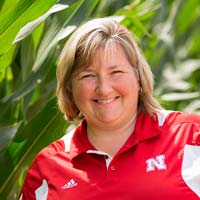
University of Nebraska
SCN is important in Nebraska because:
- SCN has been found in 59 Nebraska counties producing 93% of the state’s soybeans.
- Originally found along the Missouri River, SCN has been identified as far west as Dawson, Phelps, and Red Willow counties in the past few years.
- Yield reduction from SCN can be 5 to 10 bushels per acre or more.
- Over 136,000 eggs per 100 cc (3.4 oz) of soil have been recorded during surveys of some Nebraska fields.
- In Nebraska fields, there is an increased reproduction of SCN populations on PI 88788, the resistance found in about 98% of all SCN-resistant varieties commercially available to Nebraska farmers.
- SCN distribution- Nebraska
- SCN distribution – Nationwide
SCN Management Recommendations
There are multiple tactics for managing SCN:
- Scout / sample fields to know which field are infested with SCN and what the population densities (numbers) are
- Rotate SCN-resistant soybean varieties
- Rotate to nonhost crops
- Maintain optimum growing conditions and avoid plant stress
University of Nebraska Experts


